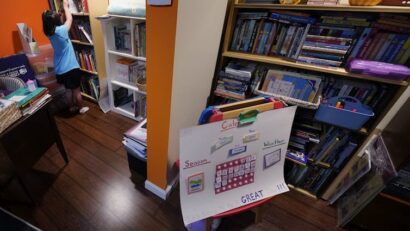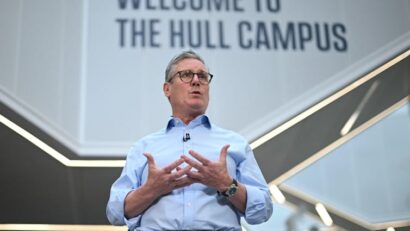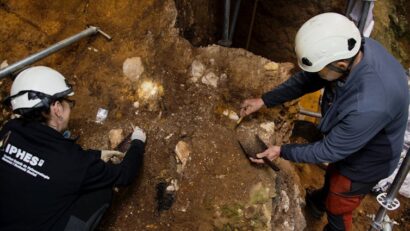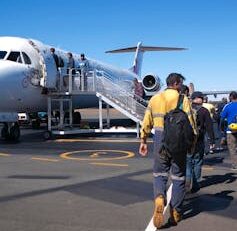
Why parents of ‘twice-exceptional’ children choose homeschooling over public school
Homeschooling has exploded in popularity in recent years, particularly since the pandemic. But researchers are still exploring why parents choose to homeschool their children.
While the decision to homeschool is often associated with religion, a 2023 survey found that the two top reasons people cited as most important were a concern about the school environment, such as safety and drugs, and a dissatisfaction with academic instruction.
I studied giftedness, creativity and talent as part of my Ph.D. program focusing on students who are “twice exceptional” – that is, they have both learning challenges such autism or attention-deficit/hyperactivity disorder as well as advanced skills. A better understanding of why parents choose homeschooling can help identify ways to improve the public education system. I believe focusing on twice-exceptional students can offer insights beyond this subset of the homeschooled population.
What we know about homeschooling
The truth is researchers don’t know much about homeschooling and homeschoolers.
One problem is regulations involving homeschooling differ dramatically among states, so it is often hard to determine who is being instructed at home. And many families are unwilling to talk about their experiences homeschooling and their reasons for doing so.
But here’s what we do know.
The share of children being homeschooled has surged since 2020, rising from 3.7% in the 2018-2019 school year to 5.2% in 2022-2023 – the latest data available from the National Center for Education Statistics. Over 3 million students were homeschooled in 2021-22, according to the National Home Education Research Institute.
And the population of homeschoolers is becoming increasingly diverse, with about half of families reporting as nonwhite in a 2023 Washington Post-Schar School poll. In addition, homeschooling families are just as likely to be Democrat as Republican, according to that same Post-Schar survey, a sharp shift from previous surveys that suggested Republicans were much more likely to homeschool.
As for why parents homeschool, 28% of those surveyed in 2023 by the Institute of Education Sciences said the school environment was their biggest reason, followed by 17% that cited concerns about academic instruction. Another 17% said providing their kids with moral or religious instruction was most important.
But not far behind at 12% was a group of parents who prioritized homeschooling for a different reason: They have a child with physical or mental health problems or other special needs.
This group would include parents of twice-exceptional children, who may be especially interested in pursuing homeschooling as an alternative method of education for three reasons in particular.
Some families have devoted significant resources, such as by creating home libraries, to homeschool their children.
AP Photo/Charles Krupa
1. The ‘masking’ problem
These parents may notice that their child’s needs are being overlooked in the public education system and may view homeschooling as a way to provide better individualized instruction.
Students who are twice exceptional often experience what researchers call the “masking” phenomenon. This can occur when a child’s disabilities hide their giftedness. When this occurs, teachers tend to provide academic support but hesitate to give these children the challenging material they may require.
Masking can also occur in reverse, when a student’s gifts tend to hide disabilities. In these cases, teachers provide challenging material, but they do not provide the needed accommodations that allow the gifted child to access the materials. Either way, masking can be a problem for students and parents who must advocate for teachers to address their unique range of academic needs.
While either type of masking is challenging for the student, it may be particularly frustrating for parents of twice-exceptional students to watch classroom teachers focus only on their child’s weaknesses rather than helping them develop their advanced abilities.
2. Individualized instruction
By the time a child enters school, parents have spent years observing their child’s development, comparing their progress with that of others their age. They’re also likely to be aware of their child’s unique interests.
While this may not be true for all parents, those who choose to homeschool may do so because they feel they have more of an ability and interest in catering to their child’s unique needs than a classroom teacher who is tasked with teaching many students simultaneously. Parents of students who demonstrate exceptional ability have expressed concerns about their child’s future educational opportunities in a public school setting.
Additionally, parents may become exhausted by their efforts to advocate for their child’s unique needs in the school system. Parents of students who demonstrate advanced abilities often pull their children out of public school after repeated efforts to improve communication between home and school.
3. Behavioral and emotional needs
Gifted students who have emotional or behavioral disabilities may find it difficult to demonstrate their abilities in the classroom.
All too often, teachers may be more focused on disciplining these students rather than addressing their academic needs. For example, a child who is bored with the class material may be loud and attempt to distract others as well.
Rather than recognizing this as signaling a need for more advanced material, the teacher might send the child to a separate area in the classroom or in the school to refocus or as punishment. Parents may feel better equipped than teachers to address both their child’s challenging behaviors and their gifted abilities, given the knowledge they have about their child’s history, interests, strengths and areas needing improvement.
Supporting students’ needs
Gaining a better understanding of the motivations driving parents to take their children out of the public school system is an important step toward improving schools so that fewer will feel the need to take this path.
Additionally, strengthening educators’ and policymakers’ understanding about twice-exceptional homeschooled students may help communities provide more support to their families – who then may not feel homeschooling is the only or best option. My research shows that many schools can do a better job providing these types of students and their parents with the support they need to thrive. Läs mer…







